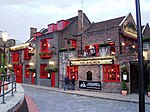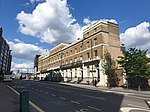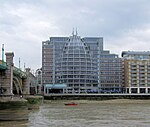Anchor Brewery
1616 establishments in England1981 disestablishments in EnglandBreweries in LondonBritish companies disestablished in 1981Buildings and structures demolished in 1981 ... and 3 more
Buildings and structures in the London Borough of SouthwarkDemolished buildings and structures in LondonEngvarB from November 2017

The Anchor Brewery was a brewery in Park Street, Southwark, London, England. Established in 1616, by the early nineteenth century it was the largest brewery in the world. From 1781 it was operated by Barclay Perkins & Co, who in 1955 merged with the Courage Brewery, which already owned the nearby Anchor Brewhouse. The Park Street brewery was demolished in 1981.
Excerpt from the Wikipedia article Anchor Brewery (License: CC BY-SA 3.0, Authors, Images).Anchor Brewery
Park Street, London Borough (London Borough of Southwark)
Geographical coordinates (GPS) Address Nearby Places Show on map
Geographical coordinates (GPS)
| Latitude | Longitude |
|---|---|
| N 51.5068 ° | E -0.0933 ° |
Address
Site of Anchor Brewery
Park Street
SE1 9EF London, Borough (London Borough of Southwark)
England, United Kingdom
Open on Google Maps










